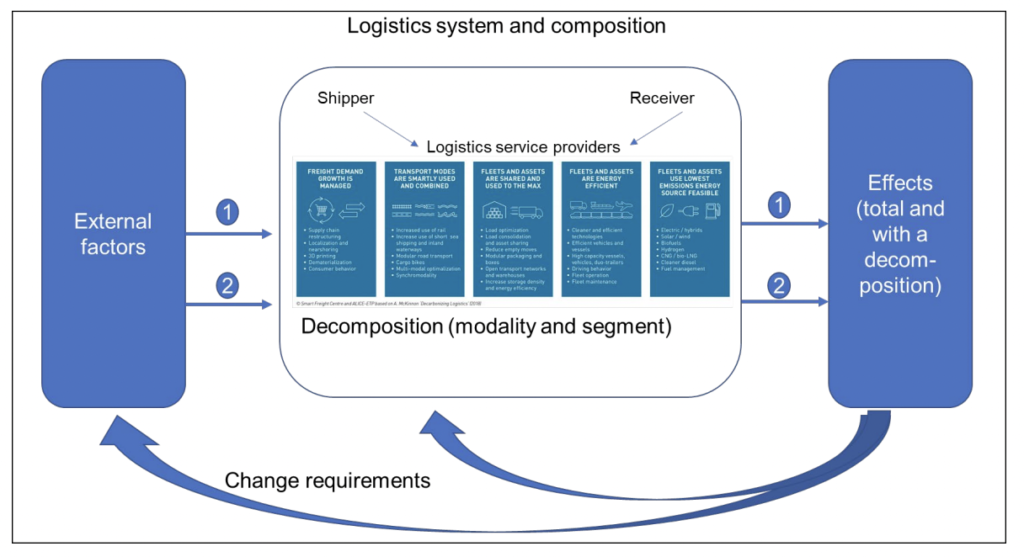City logistics must be organized more sustainably and eventually decarbonize. To this end, the focus is mainly on electrification as a technical measure, whereby electric equivalents eventually substitute conventional vehicles. There are, however, numerous decarbonization strategies for city logistics, some of which aim to reduce the number of vehicle movements by changing demand, more collaboration by sharing assets, a shift to other modalities, and energy-efficiency of current modes.

In addition to reducing CO2 emissions, some of these measures also address other challenges – such as nuisance, congestion, and safety – by reducing the number of vehicles. The applicability depends on the specific logistics pattern and segment.
Measures include:
- Managing freight demand growth (reduce)
- Smartly combine and use transport modes (multimodality)
- Share fleets and assets to the max (optimization)
- Use the most energy-efficient fleets and assets (energy efficiency)
- Use fleets and assets with the lowest emissions (clean vehicles).
In a new paper by Bram Kin, Hans Quak, and Annette Rondaij, the researchers present a framework for decarbonizing city logistics providing different logistics measures that account for the diversity in types of movements.
Source: VLW2023
